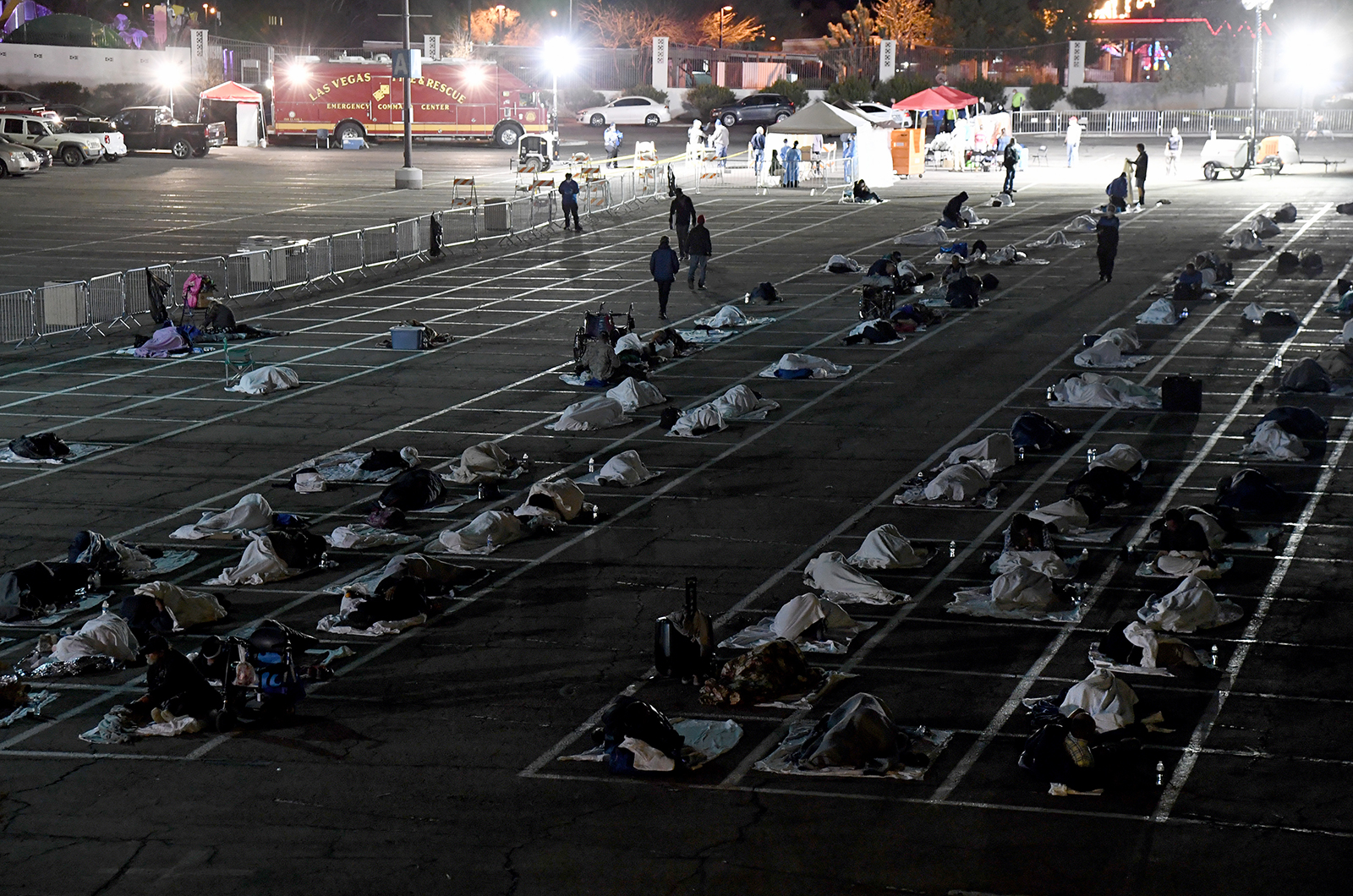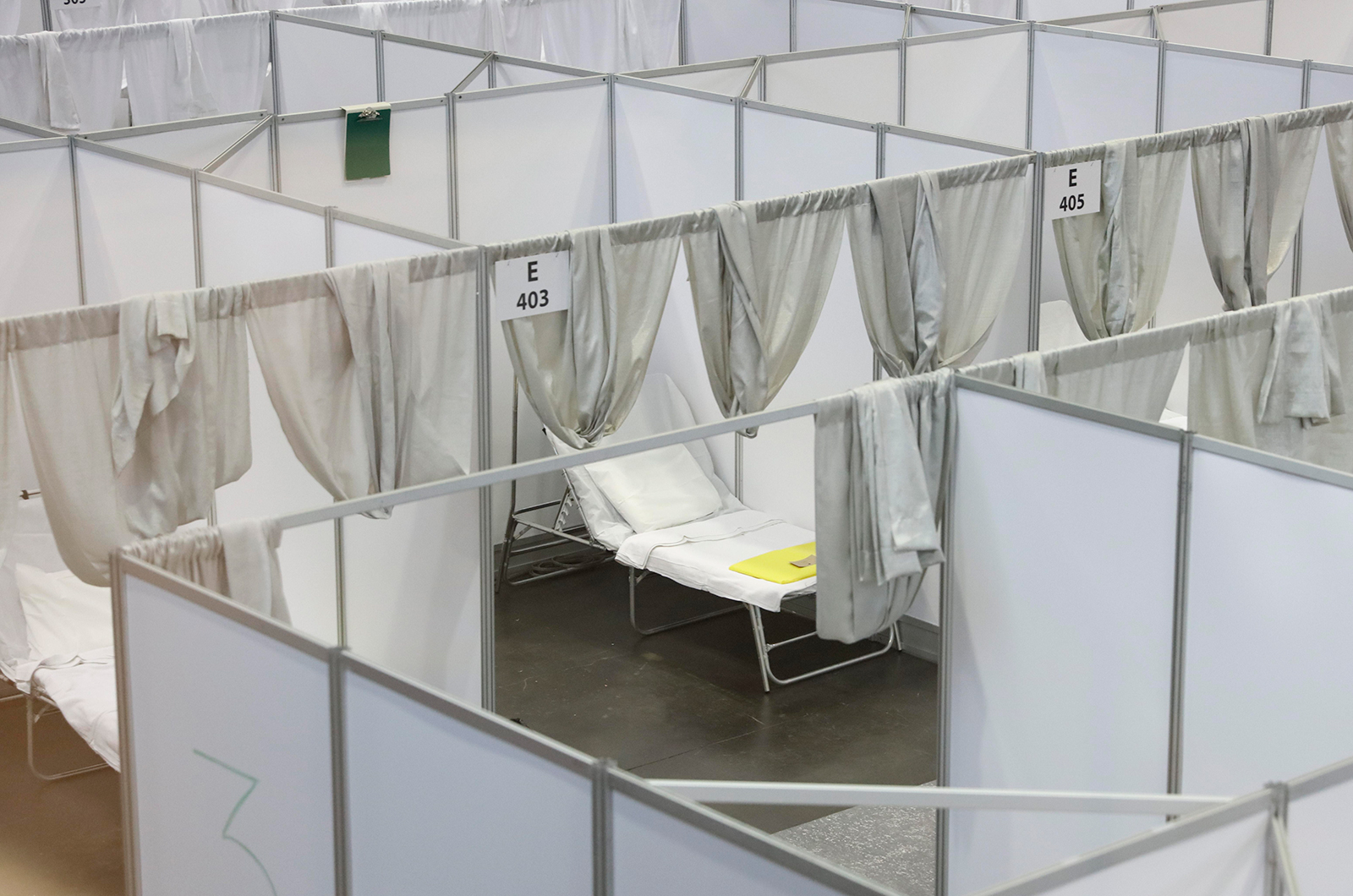Editors' note: This story has been updated to more clearly attribute phrasing from work previously published in CNBC and Vice.
I ruined the mood in a family group chat last week. Someone shared a meme that read, “This #Coronavirus is turning me into a democrat. I’m staying at home, not working, complaining about everything, and waiting for a check from the government.”
Another family member used the yearly death rate of the flu to dismiss concerns over the coronavirus. Then someone else argued that millions of people die around the world every year in car accidents. “Will cars be banned,” they snarkily asked.
I tried not to react emotionally, but it’s hard to keep your cool after weeks of trying to convince older relatives every day to stay inside and socially distance. “We’re currently at half as many American coronavirus deaths as the number of people who died on 9/11,” I replied, using the only statistic I’ve found that communicates the kind of world-changing loss that this pandemic will cause. “If Dr. Fauci’s projections are correct, it will be the equivalent of 30–60 9/11s.”
The chat went quiet for a while after that.
The numbers I was referring to have quickly gone out of date — they’re much higher now. But comparing this pandemic to other mass casualty, world-shaping events is the only way I know to make them resonate.
As of this week, more than 5,000 Americans have died of the coronavirus — more than the 2,977 who died on September 11, 2001. More than any other event in my life, 9/11 changed the world: inspiring national security policies like the Patriot Act, jump-starting the wars in Iraq and Afghanistan — the latter of which has become the longest-running war in US history — and leading to the creation of the Transportation Security Administration, Immigration and Customs Enforcement, and the Department of Homeland Security, effectively militarizing the United States’ borders and immigration services.
On Sunday, Dr. Anthony Fauci, director of the National Institute of Allergy and Infectious Diseases, said, optimistically, if we continue practicing social distancing, between 100,000 and 200,000 Americans would die of COVID-19, the disease caused by the novel coronavirus. Projections are always bounded by inaccuracies (and there have been plenty in the past few months) — but if Fauci were correct, the death toll would be as if there were a 9/11 attack every day for the next two to three months.
My grandmother was born in 1928; she spent the first 10 years of her life living through the Great Depression in the Oklahoma Dust Bowl and the last five years of her life hoarding food until it rotted in her fridge and pantry. The trauma never left. Neither will the trauma of thousands upon thousands of deaths once it’s safe to leave our homes. When we emerge, we will be different people in a different world.
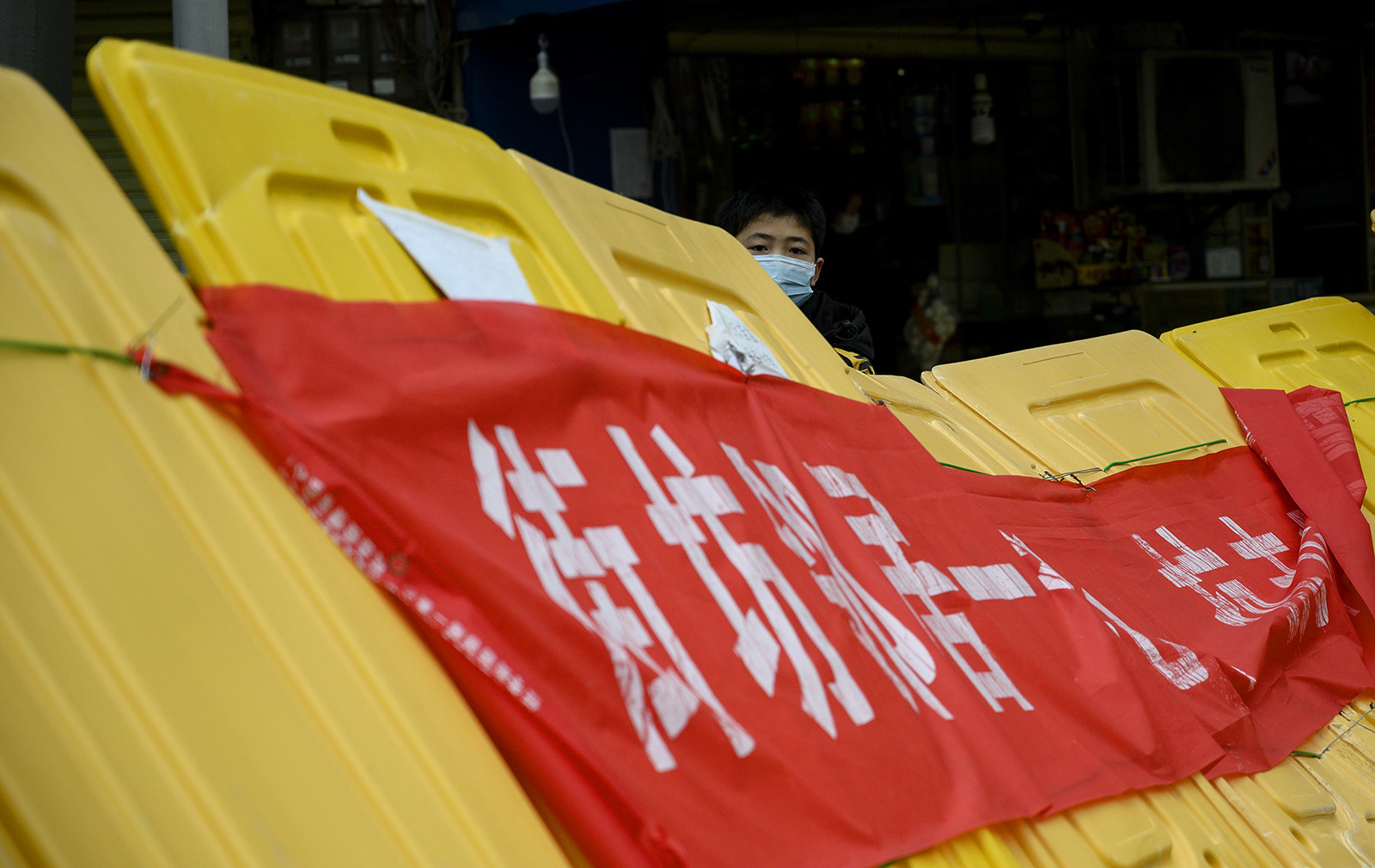
“The Authoritarian Creep”
If China’s claim to have won supremacy over the virus is to be believed, the country was able to make up for a botched early response by mobilizing its vast and intricate surveillance infrastructure to carry out an authoritarian crackdown, the terrifying scale of which is only matched by the terrifying fear among Western liberals that it was necessary.
Payment apps like Alipay and WeChat installed software to track users' movements. China’s state-run telecom color-coded users’ phones in red, green, and yellow, based on their risk of possible infection — which were then checked by guards at train stations. Those who broke quarantine were reported to the police. Chinese social media platforms like Weibo and WeChat were heavily censored to quell conspiracy theories and rumors.
Those efforts may be working. The country is reporting that its case numbers are decreasing, and it has banned virtually all foreigners from entering the country as it attempts to return to normal without a second spike.
Yet it’s hard to know exactly how real the claims are that China has flattened its curve. Three US officials told Bloomberg on Wednesday that the US intelligence community had concluded China’s numbers are actually much higher than what’s been reported.
But with the US and Europe struggling to contain the outbreak, analysts have started asking whether China will emerge from this pandemic as the new global superpower. Jeremy Lee Wallace, a Cornell professor and leader of the university’s China's Cities research group, told BuzzFeed News the country is definitely attempting to position itself as a new global leader amid the pandemic.
“[China] styled itself a leader in climate change and international trade following the election of Donald Trump and is proudly boasting of its successes in fighting COVID-19,” Wallace said. “Whether it will work depends on the outcomes in other countries and how those outcomes are perceived.”
Presenting itself as a responsible custodian is now central to the Chinese Communist Party’s propaganda strategy. Chinese diplomats and state media outlets are sparring directly with President Donald Trump’s own ad hoc online army on platforms like Twitter and YouTube, criticizing the US for its inability to mitigate the damage of the outbreak.
Jack Ma, the Chinese billionaire cofounder of the multinational tech company Alibaba Group, recently tweeted two photos of medical supplies being loaded onto a China Cargo Airlines flight. “The first shipment of masks and coronavirus test kits to the US is taking off from Shanghai. All the best to our friends in America,” Ma wrote.
According to the Jack Ma Foundation, the shipment contained 500,000 testing kits and 1 million masks. Ma’s foundations have already claimed to have shipped 1.8 million masks and 100,000 test kits to other heavily affected countries.
Chinese state media is very aware it’s a Chinese billionaire shipping tests and masks around the world, not an American one. “China has shared its experience, but many Western countries are just not willing to follow. When the pandemic is over, these countries will find that it was not China that had led to the severe conditions in the US and Europe, but their own wrong judgments and choices,” the Global Times wrote Wednesday.
David Jacobson, professor of global business strategy at Southern Methodist University's Cox School of Business and a visiting professor at Tsinghua University in Beijing, told BuzzFeed News he worries China’s test-and-mask diplomacy could fall apart, citing reports of European countries sending back faulty equipment.
“In the world of the Communist Party state propaganda, which is probably the most powerful arm right now because it's trying to globally set the narrative of how China's viewed, they're saying, ‘We're here to help, we learned all these lessons, and we're here to help the world.’” he said.
Jacobson said he’s optimistic that countries will see through the spin. “The world is seeing the sham,” he said. “If the tests don't work, test diplomacy doesn't work.”
But it’s not just in an ascendant China — an authoritarian COVID-19 creep is on the rise everywhere.
NPR called semi-authoritarian city-state Singapore a “coronavirus model.” The country flattened its curve by setting up early proactive measures like a virus-fighting task force, strict hospital and home quarantines, and a ban on large gatherings. It also used a technique called contact tracing, building a movement log of the infected through surveillance footage, digital signatures left by ATM card withdrawals or credit card payments, and a Bluetooth-tracking smartphone app called TraceTogether.
The European Union now has its first dictatorship. On Monday, the Hungarian Parliament passed a bill giving Prime Minister Viktor Orbán the right to rule by decree indefinitely, establishing a COVID-19 state of emergency without a time limit, suspending both Parliament and elections, and instituting prison time for spreading “fake news” or rumors.
Countries like Israel, Italy, and Austria are working with their telecommunications networks to use anonymized location data to track people in infection hot spots and monitor if citizens are breaking stay-in-place orders. Russia is using its massive 170,000-camera facial recognition system to catch people who violate quarantine and self-isolation. Hong Kong has deployed electronic bracelets for those who test positive for the virus. Turkmenistan’s state-controlled media outlets are no longer allowed to use the word “coronavirus,” and it has been removed from health information brochures.
India has been particularly aggressive about containing the pandemic and tracking the infected. The country has experimented with stamping people who have been infected with ink that doesn’t wash off for weeks. The Indian central government is seeking a ruling from the country’s Supreme Court that would force all media outlets to receive approval to print, publish, or telecast content about COVID-19. And in the country’s southern state of Karnataka, quarantined people are now required to download an app on their phones, through which they must take and send a selfie — which includes GPS coordinates in its metadata — every hour to government officials.
US companies like Facebook and Google are discussing how to track infection hot spots using anonymized location data, while American leaders are asking if the coronavirus is the kind of emergency that requires setting aside privacy and civil liberties.
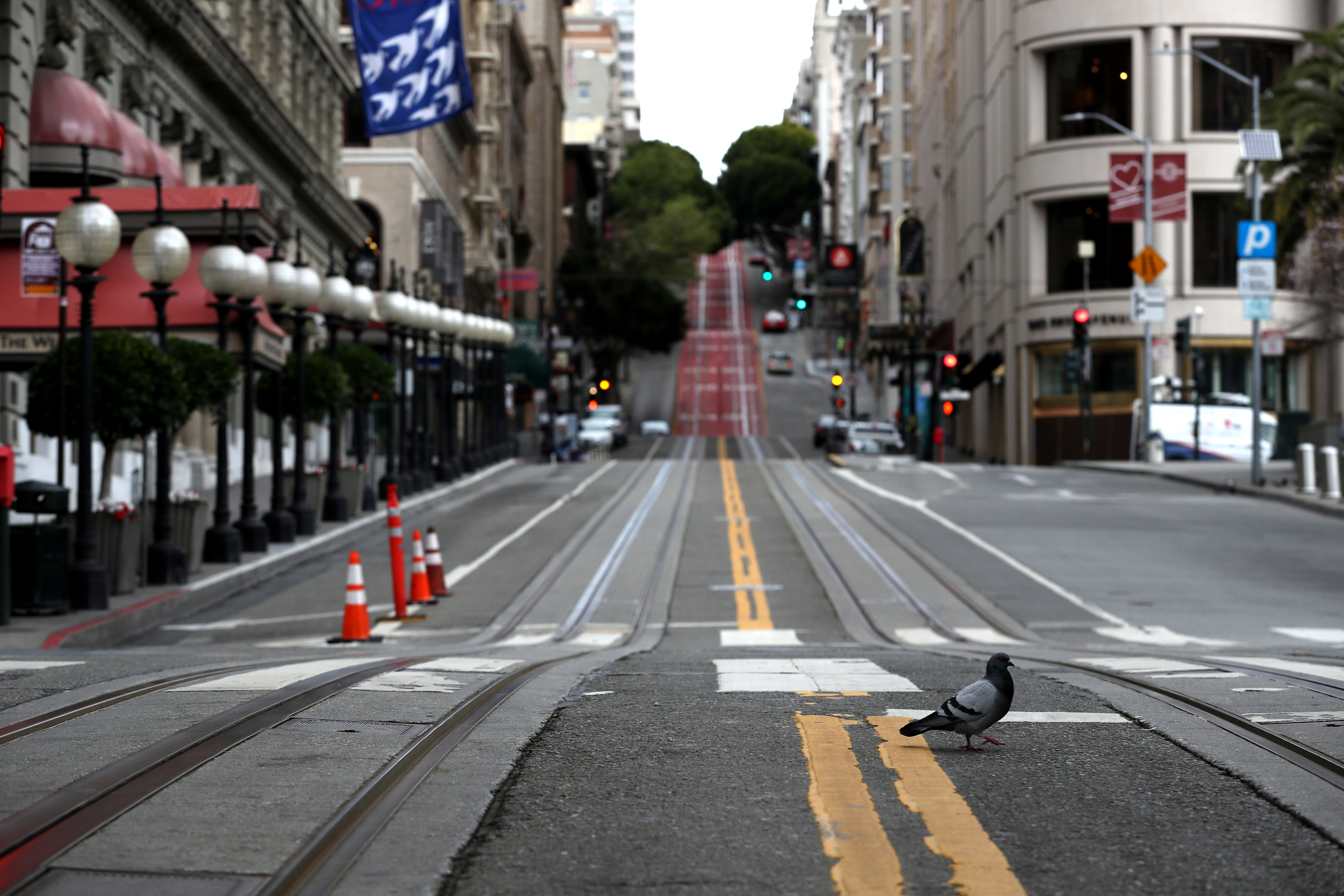
“A Greater Depression”
The immediate effects of the pandemic — postponed weddings, canceled vacations, empty supermarket shelves, sinking housing prices, salary cuts, layoffs — suggest no one will come out of this period without losing something. But we are only at the beginning.
Predicting how bad things will get economically is difficult. A viral outbreak of this scale has only happened once before in the industrialized world: the 1918 influenza pandemic that hit the world in two seasonal waves, killing 50 million people worldwide and 675,000 in the US. That pandemic occurred during World War I, which makes it hard to compare to now, even setting aside all the other changes in the past century.
But according to a 2007 research paper on the economic effects of the 1918 pandemic, published by the Federal Reserve Bank of St. Louis, the economic effects of the outbreak only lasted for a short time.
“Many businesses, especially those in the service and entertainment industries, suffered double-digit losses in revenue,” the paper read. “Society as a whole recovered from the 1918 influenza quickly, but individuals who were affected by the influenza had their lives changed forever. Given our highly mobile and connected society, any future influenza pandemic is likely to be more severe in its reach, and perhaps in its virulence.”
While the 1918 pandemic isn’t a perfect comparison to the modern coronavirus pandemic, Kevin Kruse, a history professor at Princeton University, told BuzzFeed News that last century's outbreak exacerbated national problems that were already building up.
“The 1918 flu was part of a broader wave of disruptions and crises that rocked America. The spike in unemployment and inflation after World War I, the 1919 ‘bloody summer’ of race riots, major labor strikes that fall, the First Red Scare that winter,” Kruse said. “There was such a national sense of unease and uncertainty.”
Two months into this current outbreak, massive layoffs have started, American industries have demanded bailouts, and unemployment rates have surged. Economists at the Federal Reserve Bank of St. Louis are projecting total employment reductions of 47 million — an unemployment rate of 32.1%.
According to Forbes, every sector of the American economy is shrinking: Hotel chain Marriott International is furloughing tens of thousands of workers, Landry’s, the parent company of Del Frisco’s and Bubba Gump Shrimp, laid off 40,000 workers. Air Canada plans to lay off 5,100 members of its cabin crew. Shoe retailer DSW put 80% of its workers on a temporary unpaid leave of absence.
The US news industry’s advertising spending is in free fall. Digital outlets like BuzzFeed and Vice have already announced salary cuts, and the mass media company Gannett — which owns titles like USA Today, the Arizona Republic, and the Des Moines Register — announced many staffers will be furloughed for five days a month through June.
The news media may receive low-interest loans, but airlines will receive nearly $60 billion in financial assistance as part of the Coronavirus Aid, Relief, and Economic Security (CARES) Act, which Trump signed into law last Friday, but there are already questions from industry leaders about whether that’s enough to keep the industry aloft.
Luigi Zingales, a finance professor at the University of Chicago Booth School of Business and cohost of the podcast Capitalisn’t, told BuzzFeed News that we don’t know yet how effective the CARES Act will be but added it wasn't targeted at the right industries.
“I see this as purely an electoral move, which is not justified from an economic point of view,” he said. “The goal of the package is to redistribute and preserve the existing production capacity of the US economy.”
He said one immediate issue is that no one knows how it will help gig workers, which make up about 7% of the country’s total employment. “My understanding is basically nobody knows,” he said. “Imagine I work as a cab driver and through this program I get paid my regular wage, but I work as an Uber driver and I get nothing.”
American workers are already reacting to this economic downturn, striking and protesting. More fundamentally, the way we understand labor and class in this country is changing more than it has since the Great Depression.
“A Divided America”
On Monday, a group of workers walked off the job at an Amazon warehouse in Staten Island. An Amazon employee named Chris Smalls claimed the company fired him after he led a protest against its safety conditions. On Tuesday, Whole Foods Market workers held a “sick-out.” According to CNBC, "members of the Industrial Division of Communication Workers of America protested Monday at the company’s aviation facility in Lynn, Massachusetts, as well as its headquarters in Boston," to demand the company use manufacturing resources to build ventilators.
Health care workers are protesting as well. Nurses across the country have begun to protest the shortages of personal protective equipment, which they say are putting their lives at risk. National Nurses United held a rally in front of Alta Bates Summit Medical Center in Oakland earlier this month. Last Saturday, more than two dozen nurses protested in front of Jacobi Hospital in the Bronx.
And the fact that major American cities, including New York, Boston, Los Angeles, San Francisco, and St. Louis, have temporarily banned evictions hasn’t quelled the rumblings of a nationwide rent strike. Rent Strike 2020, the activist organization leading the push, is demanding a two-month freeze on the collection of rent, residential mortgages, and utility bills “to allow working families to do what is necessary to prepare for the difficult social measures required to flatten the outbreak curve,” the organization’s website reads.
Peter Gowan, a researcher and resident fellow at the Democracy Collaborative's Next System Project, told BuzzFeed News that many Americans are learning that a lot of the economic policies they were told couldn’t be done following the 2008 financial crisis are actually possible.
“You were seeing people say it's impossible to think about giving cash payments to everyone, it's impossible to increase unemployment benefits, that it's impossible to have the government tell companies what they need to be producing,” Gowan said. “But now you're seeing the Democratic Party and parts of the Republican Party telling President Trump that he needs to use the Defense Production Act to increase the production of ventilators.”
But it’s not just strikes and protests; TikTok videos demonstrating Mark Zuckerberg's coronavirus donation — $25 million — compared to his total wealth — $55.1 billion — and the immediate public disgust at actor Gal Gadot’s star-studded “Imagine" video reveal how quickly the pandemic has torn open the seams of American class consciousness.
“I hope that in the coming months and years that we'll see a revitalized labor movement,” Gowan said. “I hope the left, and people in general, internalize that a lot of the things you're told are rules are actually just norms created for the preservation of property and the rights of capital.”
Even though the way Americans think about the structure of their society and the value of labor is changing quickly, there are still two outbreaks in the US: One is a minor inconvenience suffered by the rich, who can abandon heavily affected urban areas for second homes, escape to “virus-free” retreats, and all seem to be getting tests.
And there is a second outbreak, where delivery drivers and retail employees work under the constant threat of infection, where nurses have to use bleach to clean and reuse face masks, and where parking lots in Las Vegas are turned into homeless shelters, complete with spray-painted social distancing markers.
Things are even worse for the incarcerated. At the Cook County Jail in Chicago, 134 inmates tested positive for COVID-19 this week. According to one legal organization’s analysis, coronavirus infections in New York City’s largest jail have skyrocketed to nearly 10 times the rate of the city’s residents. We are teetering dangerously close to a viral bomb going off inside ICE detention centers. A medical worker and a detainee have both tested positive for COVID-19 at a New Jersey facility earlier this month; last week, three unaccompanied immigrant children in the custody of a US refugee agency in New York tested positive for the virus.
On Sunday, Trump walked back his Easter deadline for turning the economy back on, but the recent push to go back to work — pandemic or not — is still being trumpeted by prominent Republicans and right-wing media. As Trump continues prioritizing the market over human lives, his administration’s Lord of the Flies approach has left the country’s governors scrambling to fill in the gaps left by a impotent federal government — a grim fulfillment of writer James Fallows' prediction last year that America would soon be heading toward the disintegration that marked the end of the Roman Empire.
Conspiracy theorists and far-right extremists are experimenting with how to use the coronavirus to their advantage. The QAnon movement and many other misinformation communities, like 5G truthers and anti-vaxxers have have been more active, latching on to the pandemic as proof of their paranoid worldviews.
Tom Kawczynski, a white nationalist in Maine, is hosting a daily Coronavirus Central podcast that has been in Apple’s top 20 podcasts under the “Health & Fitness” category since the outbreak began. As Vice reported, last week, an international white supremacist group called the Hundred-Handers created a "Twitter account claiming to be the regional arm of climate change activist group Extinction Rebellion [and it] tweeted photos of an apparent postering campaign promoting the coronavirus as a natural 'cure' to the human 'disease.'"
We will exit this pandemic with a new understanding of how both our government and society work. Formerly fringe ideas on the left like universal basic income or universal health care are now household terms, online misinformation and disinformation are no longer abstract concepts but constant presences in our group chats, and malicious ideologies like ecofascism are taking root.
We will need new stories, but it’s unclear who will tell them and how.
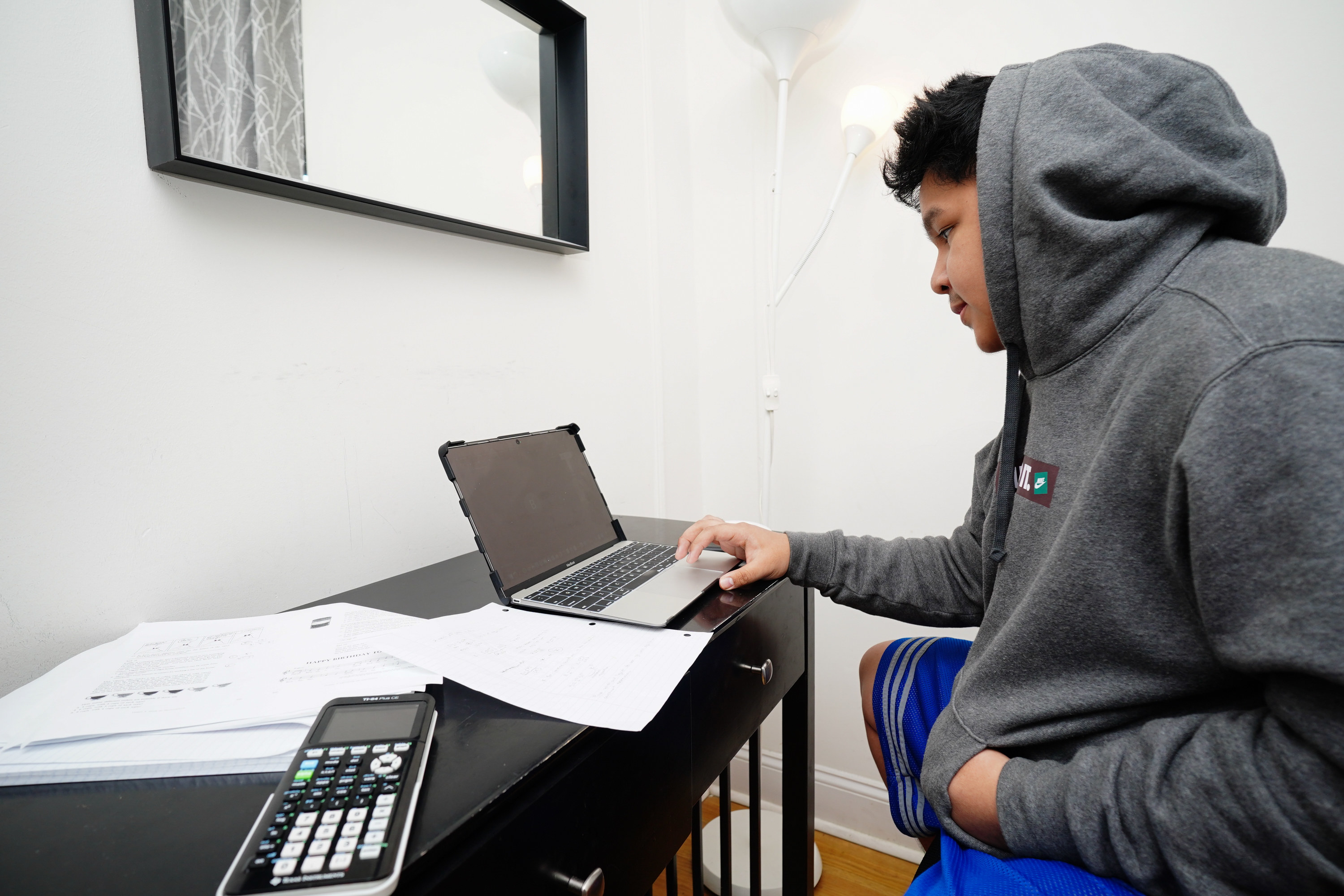
“Streaming Everything”
In the same way the pandemic has affected the global supply chain for physical goods, it has caused an immediate halt — and reinvention — of global pop culture. Production on blockbusters like Mission: Impossible 7, the live-action Little Mermaid, and Marvel’s Shang-Chi and the Legend of the Ten Rings have shut down. And completed films like A Quiet Place Part II, F9, and the James Bond film No Time to Die have all had their release dates pushed back.
Every sector of the entertainment industry is on pause. HBO has halted production on the third seasons of Succession and Barry. Music festivals like the Governors Ball and Coachella have been canceled. The 2020 South by Southwest conference and festivals have been canceled. Musicians like Lady Gaga, Alicia Keys, Haim, and Sam Smith have delayed their album releases, hoping to release them and tour again once it's safe.
Which means we’ll likely see a deluge of prepandemic content next fall and winter. It will feel strange. Many critics have already pointed out that TV shows and movies filmed before the outbreak carry an unintentional nostalgia for a world full of crowds, busy restaurants, and public displays of affection. Already, films shot a year ago feel as dated as movies where a character runs through a pre-9/11 airport empty of metal detectors and TSA agents.
More interesting are the kinds of entertainment that are flourishing right now. Movies like Sonic the Hedgehog, DC’s Birds of Prey, and the Ben Affleck sports drama The Way Back are all getting early releases on video-on-demand platforms. Streaming sites like Netflix, Amazon Prime, and Disney+ are seeing huge audience spikes. Musicians Sufjan Stevens and Dua Lipa have dropped albums during the quarantine. Many more artists are livestreaming regular concerts for bored fans, trapped at home.
Josh Gondelman, stand-up comedian and co–executive producer and writer for Showtime’s late-night show Desus & Mero, told BuzzFeed News that retooling the show to air remotely was a big change, especially because its two hosts are self-isolating in different states — Daniel “Desus Nice” Baker in New York, Joel “The Kid Mero” Martinez in New Jersey. They recently interviewed Dr. Anthony Fauci via a three-way video conference.
Gondelman said that so far the pandemic hasn't inspired anything new for the show creatively, but the new production workflow is a lot stronger than it was before. “I guess it would be the same if they lived four blocks apart. But ‘two different states’ is a more fun quote! We're getting into a rhythm now,” he said.
“This whole situation has felt so unexpected and destabilizing that I'd hate to make some proclamation and have it be like...180 degrees off,” he said about predicting what the show — or the entertainment industry — will look like after the pandemic. “I guess one surefire thing would be: People will continue to see [actor] Judy Greer onscreen and think, Wow! She's great in everything!”
But our concept of what visual entertainment looks like has been transformed almost overnight, whether it’s Stephen Colbert performing a monologue from his bathtub or the Backstreet Boys performing "I Want It That Way" from the five members’ individual homes. A cat can jump into a Skype interview on CNBC. Miley Cyrus and Demi Lovato can casually talk about probably hooking up during one of Cyrus’s daily Instagram Lives. Andrew Lloyd Webber can sit at his piano and takes song requests from Twitter.
Robert J. Thompson, trustee professor of television and popular culture at the S.I. Newhouse School of Public Communications at Syracuse, told BuzzFeed News there’s no precedent for how this pandemic has shifted the entertainment world.
“[The 1918 pandemic] was an era of the phonograph and the silent film,” he said. “We were just moving into the period of potentially live-in-the-home technology.”
Thompson said the previous pandemic didn’t have any technology or emergent media to compare with what we’re seeing now. We’re in uncharted territory. None of the media trends we’re embracing in quarantine were born during the crisis, he said, but it will accelerate them.
“In terms of the way in which we use technology for information and entertainment, it's going to be a big jump forward,” Thompson said. “To believe that once we're given the go-ahead to go outside that everything is going to go back to normal, I think that's an incorrect assumption.”
In the short span of a little less than two months, pop culture has changed shape. No longer well lit and sleekly produced, the content we want now resembles the videos on the one app that has fared better than any other during this crisis — the short-form video app TikTok. The platform, owned by ByteDance, a Beijing-based tech company, has long been central to China’s soft power, and it’s now the defining app of this era. It’s become a near-infinite repository of COVID-19 content, including memes from self-isolated teenagers, handwashing dance challenges, and doctors and nurses using it to share outbreak updates.
But what’s happening to our entertainment is only reflecting what is happening to the way society works now: We have moved online, and it is hard to imagine going back.

“We Live Online Now”
Right now, for one of the first times in modern history, huge swaths of the Earth’s population are being told to stay indoors. Workers who can conduct business remotely are. Group videoconferencing platforms like Zoom and Houseparty have blossomed. We spend our days switching back and forth between different inboxes, emails, family group chats, Slack messages, WhatsApp groups, and Instagram DMs — the bad screen and the good screen are now the same screen. There is a strong possibility we will not suddenly revert back to full offices when the world turns back on.
Christopher McKnight Nichols, history professor and director of the Center for the Humanities at Oregon State University, told BuzzFeed News that the 1918 pandemic’s biggest impact on American media was how seriously the press began to take public trust following the outbreak.
“The lessons learned were largely about [news] coverage when the federal government is suppressing honest, open speech,” Nichols said. “There were rampant false cures and treatments peddled by large firms as well as those who could best be understood as charlatans. Attempting to crack down on advertising of some of this false medicine was a result.”
This wave of mistrust is happening now as well. Except — contrary to the countless pieces fretting about an end to globalization, which cite the general breakdown in the rule-based global order and the deteriorating relationship between the US and China — we’re combating misinformation on a global scale we’ve never seen before.
As the pandemic left China, an unverified video of a Chinese nurse overreporting the virus’s death toll spread from Chinese messaging platform WeChat to Twitter, where it was subtitled in English and then shared in huge numbers on YouTube. The same hoax about helicopters being used to disinfect cities was spotted in Italy, the Netherlands, the US, Turkey, and Argentina by fact-checkers. (While in Mumbai, workers really were being sprayed with an unknown chemical disinfectant.) Twitter's US-based moderation team took down two of Brazilian President Jair Bolsonaro's tweets on Sunday for promoting the anti-malaria drug hydroxychloroquine, which Trump has touted as a possible COVID-19 cure.
By removing the ability to meet in person, by shuttering traditional entertainment, and because we are facing an increasingly undeniable and inescapable existential terror, the internet has become a global monoculture. But it’s not all hoaxes and conspiracy theories. The two most viral songs about the coronavirus outbreak are from Vietnam and the Dominican Republic.
We go online to commiserate about whatever’s on Netflix (even if it’s a seven-part docuseries about a gay zookeeper who was arrested for murder-for-hire) or argue with each other about whether New York Gov. Andrew Cuomo is hot (or has nipple piercings). This is not totally different to how we lived before — except there’s nothing else now.
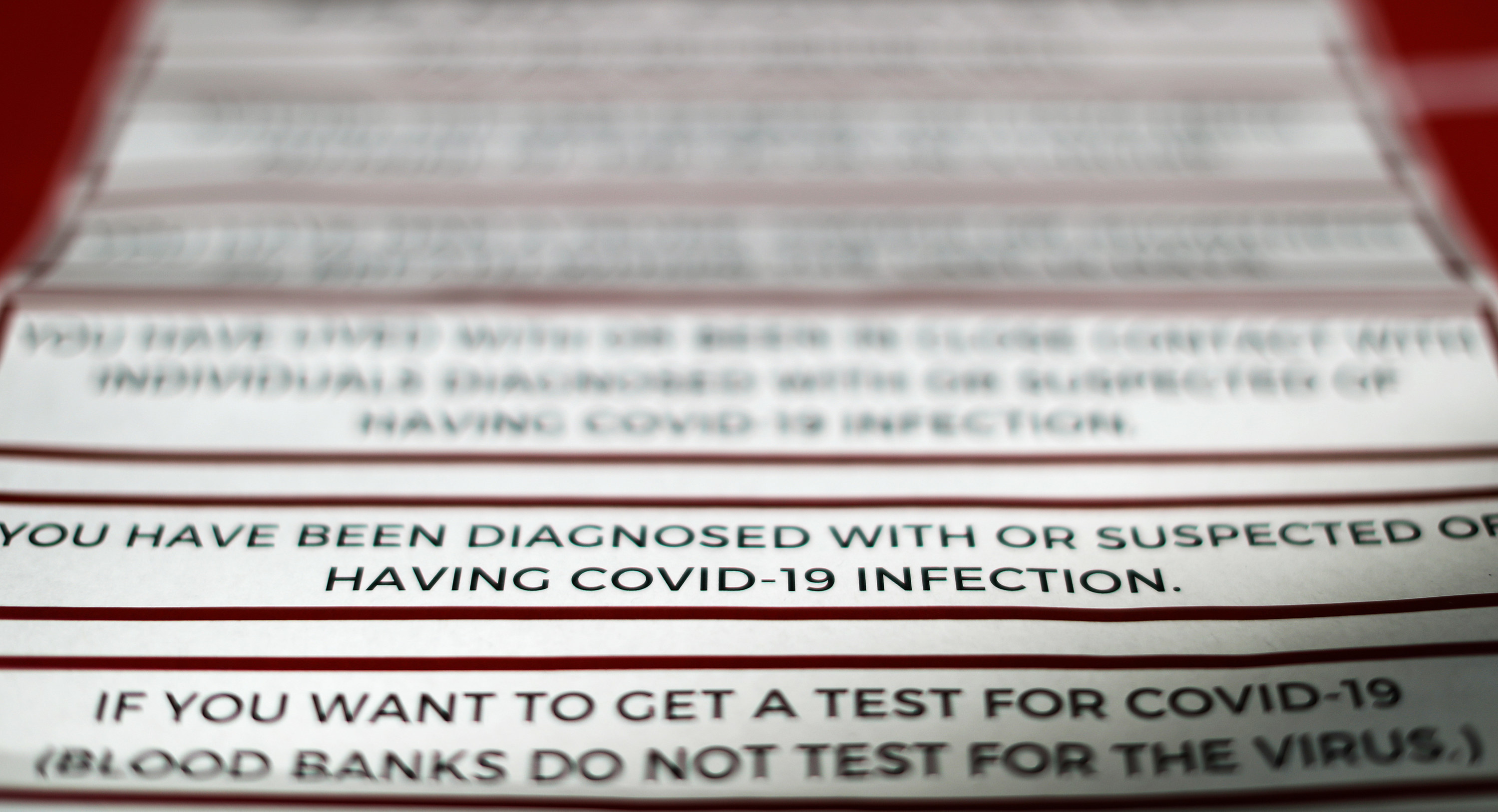
Our leaders have struggled to properly mitigate this crisis: British Prime Minister Boris Johnson initially planned to build herd immunity at the cost of millions of lives, Trump downplayed the outbreak, Mexican President Andrés Manuel López Obrador ignored social distancing policies to publicly hug the mother of Mexico’s most infamous drug lord, Joaquín “El Chapo” Guzmán, and Indian Prime Minister Narendra Modi announced a total lockdown of the country, which resulted in a heartbreaking and dangerous mass exodus of migrant workers walking hundreds of miles home.
On Good Morning Britain earlier this month, Piers Morgan compared the coronavirus to World War I.
“You’re not having to fight anybody. You’re not having to risk your life being gunned down on trenches,” the host shouted at the camera, raging against Britons who refused to socially distance. “You're being asked to just go home sit there and do this, just watch telly.”
It’s true, bombs aren't dropping. Trenches aren't being summited. But the comparison doesn't reflect the anxious mundanity of watching quiet and invisible slow-motion tragedy play out every second across our phone screens. But we also don’t really know where we’re going.
The world of the 1918 pandemic — of silent films and phonographs — is so different to ours now that we cannot use it as a guide for how we will change. Nor can we use something like 9/11 to imagine the trauma and what it will do to us. The systems we use to govern our world, already strained, may not survive.
Our trust has been eviscerated. The only thing we’ve been able to count on through all of this is the pure networking power of the internet. Locally, individually, we are using it to quickly change the way we live to face the crisis. Governors are providing their constituents with emotional and much-needed daily livestreams. Teenagers are having proms on Zoom. DJs are throwing dance parties on Instagram. 3D printer hobbyists are learning how to make medical-grade masks.
The main lesson in all this is that we have an infinite capacity to connect with one another in the dark. Even if it’s as simple as sharing a funny video with your family group chat.
After I acted like a jerk in my family group chat, there was a bit of a back-and-forth about how bad things will get. We were collectively worried about whether my cousins working at Mass General would be safe. We talked about how our grandparents would have handled this if they were still alive. And then someone dropped in a tweet with a supercut of Italian mayors yelling at their citizens for breaking quarantine.
The tweet read, “the world needs Italian Mayors to sort the world out not passionless journos & clueless academics.” I have to admit, if only for a little bit, I felt better. ●

